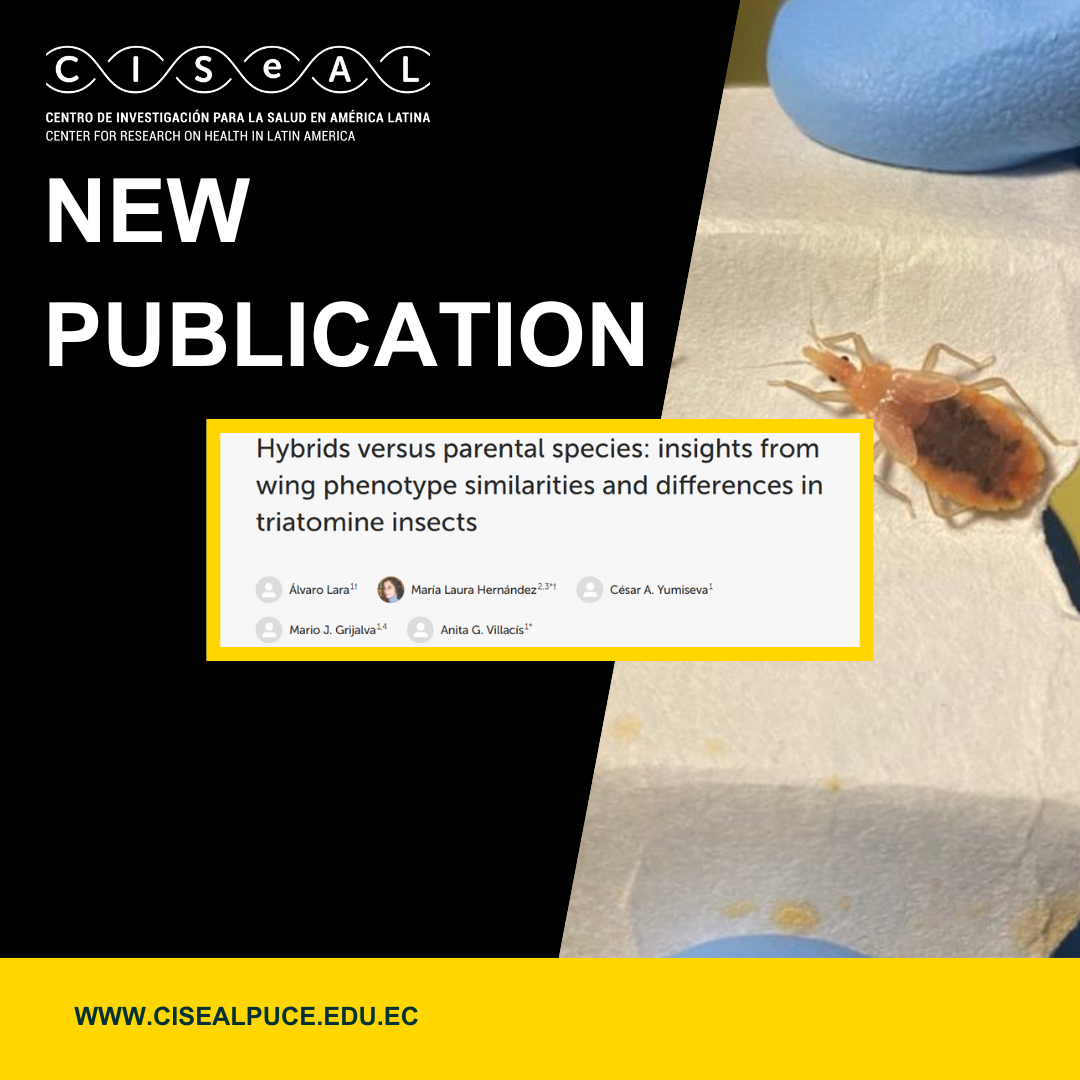
Chagas disease, caused by Trypanosoma cruzi and primarily transmitted by triatomine insects, remains a major public health issue in Central and South America. In Ecuador, where approximately 230,000 people are infected, vector species such as Rhodnius ecuadoriensis and Triatoma dimidiata play a crucial role in the disease’s transmission. However, secondary vector species, particularly those of the Panstrongylus genus, have gained greater importance due to their increasing adaptation to human environments and their high infection rates with T. cruzi. Among these, Panstrongylus chinai and Panstrongylus howardi have been reported in Ecuador, displaying distinct morphological characteristics and distribution patterns.
This study, based on the dissertation work of Álvaro Lara under the supervision of Dr. Anita Villacís and other researchers from CISeAL, such as César A. Yumiseva, Mario J. Grijalva, and in collaboration with María Laura Hernandez, a researcher from CONICET (Córdoba, Argentina), aimed to characterize the wing morphometric traits of P. chinai, P. howardi, and their experimentally obtained hybrids to assess potential environmental adaptations and inheritance patterns. Field collections were conducted in the provinces of Loja and Manabí, which represent distinct ecological conditions. Specimens were transported to CISeAL for controlled hybridization experiments and morphometric analyses.
The hybridization experiments revealed that while first-generation hybrids (F1) were viable and exhibited a combination of parental traits—including a coloration similar to P. howardi and a body size similar to P. chinai—the second-generation offspring (F2) were not viable. This suggests genetic incompatibilities or disruptions in co-adapted gene complexes. Geometric morphometrics, a method that allows for precise quantification of shape variation, was employed to compare the wings of 262 individuals, including parental species and hybrids. Nine interspecific crosses were conducted, producing F1 hybrids but no viable F2 offspring. Morphometric analyses confirmed intermediate wing characteristics in hybrids, with certain dominant traits inherited from the parental species.
The findings highlight the potential impact of hybridization on vector ecology and disease transmission dynamics. Since morphological traits can influence dispersal, habitat selection, and vectorial competence, these results contribute to a better understanding of Chagas disease epidemiology. Further research is needed to explore the genetic mechanisms underlying hybrid sterility and to assess the ecological implications of hybridization among triatomines. This study underscores the value of geometric morphometrics in vector research and provides essential data for the surveillance and control of Chagas disease vectors in Ecuador.
If you want to learn more about this research, including specific details such as the exact methods used in geometric morphometrics and the statistical analyses performed, we invite you to review it at the following link:
https://www.frontiersin.org/journals/insect-science/articles/10.3389/finsc.2025.1547963/full



